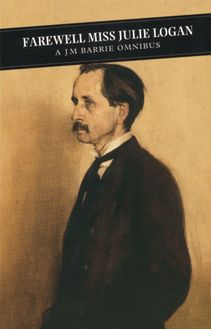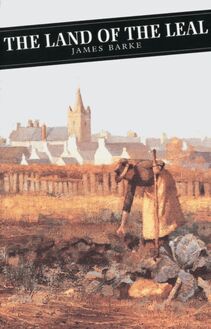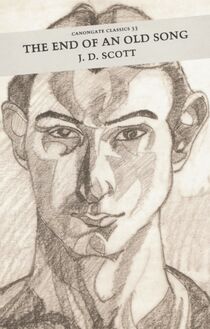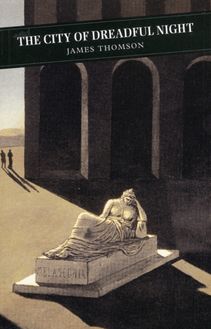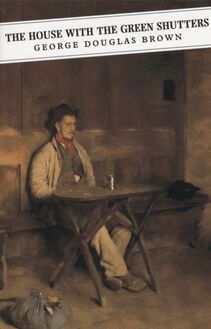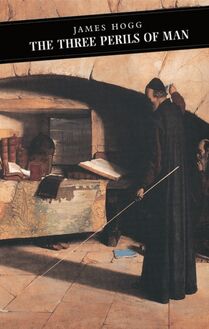Ane Satyre Of The Thrie Estaitis , livre ebook
178
pages
English
Ebooks
2012
Vous pourrez modifier la taille du texte de cet ouvrage
Obtenez un accès à la bibliothèque pour le consulter en ligne En savoir plus
Découvre YouScribe en t'inscrivant gratuitement
Découvre YouScribe en t'inscrivant gratuitement
178
pages
English
Ebooks
2012
Vous pourrez modifier la taille du texte de cet ouvrage
Obtenez un accès à la bibliothèque pour le consulter en ligne En savoir plus
Publié par
Date de parution
26 juin 2012
Nombre de lectures
0
EAN13
9781847675064
Langue
English
Poids de l'ouvrage
1 Mo
Publié par
Date de parution
26 juin 2012
Nombre de lectures
0
EAN13
9781847675064
Langue
English
Poids de l'ouvrage
1 Mo
Contents
Introduction
The Present Edition
Dramatis Personae
Part One
Interlude
Part Two
Appendix: Proclamatioun maid in Cowpar of Fyffe
Commentary
Introduction
The audience which attended the performance of Ane Satyre of the Thrie Estaitis at the Castle Hill, Cupar on 7 June 1552 were citizens of a deeply troubled nation. Eight years of intermittent war with England between 1542 and 1550 had left the country economically weakened and politically divided. Several Scottish fortresses were still garrisoned by the French troops who had been brought in to fight the English. Government was in the hands of the faction led by James Hamilton, earl of Arran and duke of Châtelherault, but his position was quickly deteriorating, and by the time the play was performed again at Edinburgh, probably on 12 August 1554, he had been replaced by Mary of Guise, mother of the Queen who was then only twelve years old and who had been absent in France, the bride of the Dauphin, since 1548. In the summer of 1552, a year after the treaty by which the Anglo-Scottish war was brought to an end, much of Scotland was in the grip of famine: and this ‘derth’ was, as we shall see, a recurring theme in Parliament and in the proceedings of the Council.
The privation which must have been the consequence of campaigns in Angus, Lothian and the Borders was exacerbated by other factors: there was economic exploitation, which had been complained of in the past, and there are hints that agricultural land was being enclosed in ways which were causing still more hardship. Much of this oppression was suffered at the hands of churchmen, not least in Fife where, in 1546, a group of lairds with Protestant sympathies had assassinated Cardinal Beaton, archbishop of St Andrews. The Council of the Scottish Church had attempted reform in 1549, but three years further on there was little evidence of substantial progress.
This is not to suggest that the government was unaware of the need for change. James Hamilton, archbishop of St Andrews and brother of the Governor, had convened another Council on 26 January 1552, which had among other measures agreed to the production of a catechism for the guidance of both clergy and laypeople. 1 An officially-sanctioned vernacular textbook of elementary theology went some way towards meeting the criticisms of the Reformers, even if its contents were to prove impeccably orthodox. By the time Lindsay’s play was performed at Cupar, the Catechism must have been nearing completion. Its colophon is dated 29 August, and its four hundred pages must have taken the printer, John Scot, much of the summer to set up in type. Although the main point of its careful exposition of the Ten Commandments, the Creed, the Sacraments and the Pater Noster is the instruction of the laity, both the statute approving its introduction and, at some points, the text itself assert the need for reform among the clergy:
The office of a Preist and Byschop is nocht to leive in idilnes, nocht to leive in fornicatioun and huirdome, nocht to be occupeit in halking and hunting, bot to leive ane haly lyfe, chaist in body and saule, to pray to God for the pepil, to offer giftis and sacrifice to God for the pepil, to preche the word of God to the pepil, and lyk lanternis of lycht to gife exempil to haly lyfe to the pepil, quhow thai suld contemne all inordinat lufe of carnal plesour, of warldly geir, and temporal dignitie and to leive a christin lyfe to the plesour of God. 2
The provincial councils of 1549 and 1552 conceded that these duties were widely neglected, and to that degree there must have been common ground between Hamilton’s reform party and more radical critics of the Church. On the other hand, the audience of The Thrie Estaitis saw churchmen resisting reform rather than embracing it, and this surely reflects Lindsay’s conviction that the time had passed when the Church might succeed in putting its own house in order. Archbishop Hamilton’s Catechism is a remarkable witness to the desire for a more spiritual Church in Scotland, but it was too orthodox to meet the objections of Lutherans and Calvinists on such matters as indulgences and the doctrine of Purgatory, the privileges of the ecclesiastical courts, and the cults of saints.
A week after the provincial council approved the preparation of the Catechism , Parliament convened. Here, too, ecclesiastical matters formed an important element of the business, and if the earlier meeting had implicitly recognised the validity of the Reformers’ condemnation of clerical abuses, Parliament now appeared more concerned with reinforcing the laity’s obligations to the Church. Stiff fines were imposed for swearing, for the disruption of the Mass and for attending Mass when under pain of excommunication, and acts were passed against bigamy and adultery. None of these problems was, of course, new; but taken together these measures might be seen as complementary to the campaign of better instruction which had been initiated through the Catechism . But the overwhelming concern of the 1552 Parliament was with the famine which had been developing over the previous two years. Despite previous acts ‘for stanching of beggaris’, it was noted that
the beggaris daylie and continuallie multipleis and resortes in all placis quhair my Lord Governour and uthers Nobillis convenis swa that nane of thame may pas throw the streitis for raming and crying upone thame. 3
The answer to this unpleasant and unwelcome situation was to reinforce the 1535 Act confining beggars to their parish of origin, a law which means that the Poor Man of The Thrie Estaitis is manifestly a criminal.
Other acts attempted to restrict the slaughter of lambs and the hunting of hares and young gamebirds, to insist upon the maintenance of ‘ressonabill prices’, and to control consumption through new sumptuary laws: archbishops, bishops and earls were to have no more than eight dishes at a meal; abbots, priors and deans no more than six; down to burgesses and other ‘substantious’ men, who were limited to three. A more practical measure, perhaps, was that imposed by the Privy Council on 9 February, which blamed the spread of famine on the export of food and banned the sale abroad of ‘fische, flesche, nolt or scheip, cheise, butter, or ony uther kynd of victuallis or viveris’. 4 But this seems to have little effect, for a similar decision was made on 16 October. 5
This, then, was the atmosphere in which the Cupar performance of The Thrie Estaitis took place. Fife had been spared the worst depredations of the English armies, but the rapid deterioration of the economic situation must still have been apparent. It is clear that economic factors contributed to the crisis in the Church, and there is evidence that Fife was an important centre of lay resistance. 6 The assurances of Diligence that ‘we sail speik in generall / For pastyme and for play’ may not be mere theatrical convention: in a highly charged political situation, Lindsay deals carefully but forthrightly with a wide range of issues, for even his position as an officer of state would not have saved him had he stepped beyond the limits of toleration. A decade earlier, a friar had been burned for producing heretical plays in Dundee. 7 We should not underestimate the force of The Thrie Estaitis in its own time, and I am convinced that its time is very precisely 1552.
Date and Early Performances
Three possible dates have been suggested for the original composition of The Thrie Estaitis . The earliest, proposed by John MacQueen, falls in the earlier fifteen-thirties. 8 No external evidence exists to support such an early date: it depends entirely upon textual similarities between the play and poems written by Lindsay between 1528 and 1530, and upon the identification of King Humanitie with the young James v. The latter point is more a matter of faith than of evidence, since the covert nature of the supposed allusion makes it essentially unprovable. I suggest below that Humanitie is both a type of the Young King (a familiar figure in advice literature) and a representative of human nature more generally, but I do not find any real basis for the view that he is also a contemporary portrait of the Scottish king. That there are parallels between the protagonist’s experience and the politics of James’ minority is both undisputed and unsurprising, but it does not follow that they were topical in the sense suggested by Professor MacQueen. The textual evidence is no more compelling. As Anna Jean Mill pointed out, 9 there is no reason why Lindsay should not have gone back to his poems of the early part of James’ reign for material exposing the perils of dissolute kingship and corrupt advice; there is, in fact, a good deal of evidence that he did exactly that throughout his literary career. Nor does Professor MacQueen deal with the parallel between 11.2965–74 of The Thrie Estaitis and 11.414–20 of The Tragedie of Cardinall Betoun (1547), which is at least as close as those with the early poems. I believe that it is more likely that the Thrie Estaitis version is an expansion of the fines in the Tragedie than that the latter is a contracted version of the former; but even if the reverse were true it would involve, if Professor MacQueen’s hypothesis were to be accepted, precisely the kind of long-distance retrospective borrowing he discounts in the case of The Dreme and The Complaynt . And if these lines are a later interpolation, how we can be confident that any particular passage survives from a supposed earlier version of the play?
In the case of the second possible date, we do at least have clear evidence of a dramatic performance. Thanks to a Scottish Protestant, who supplied ‘Nootes’ to the English ambassador, we even know a good deal about the nature of the play performed before James v and Mary of Lorraine at Linlithgow on 6 January 1540, and the affinities between this interlude an
